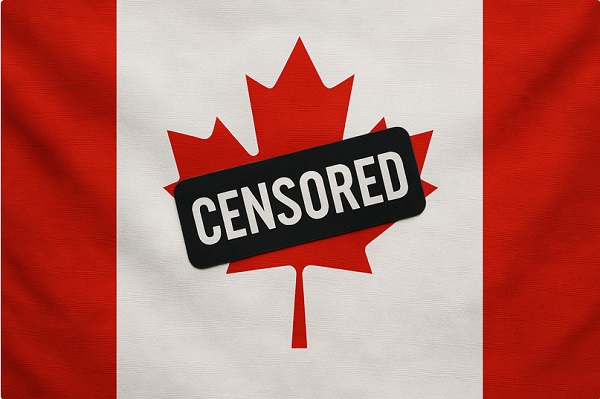Censorship Industrial Complex
Rise in arson coincides with residential school murders claim
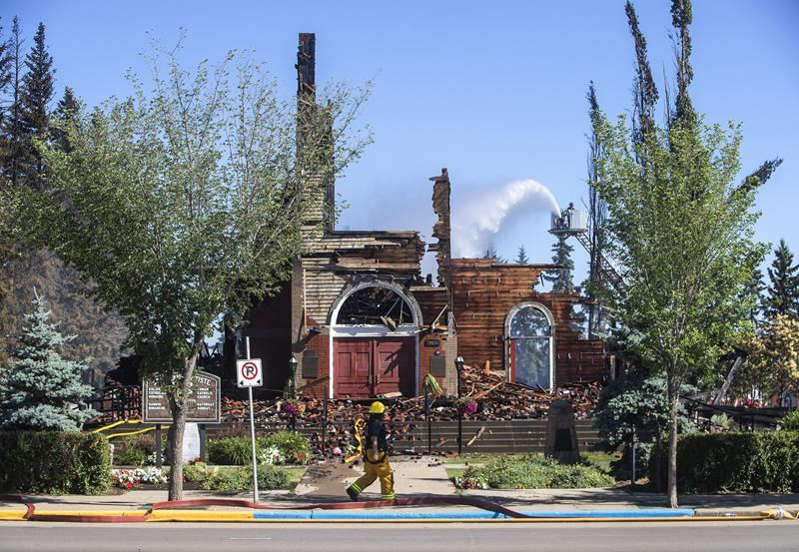
Morinville, Alberta’s 114 year old Jean Baptiste Catholic Church was destroyed by arson in June 2021
From the Frontier Centre for Public Policy
Staggering Number of Churches Burned, More Than Thought
Blacklocks reports that since 2010, when the Truth and Reconciliation (TRC) commissioners began making the claim in interviews and in interim reports that thousands of indigenous children had died at residential schools under suspicious circumstances, more than 400 Christian churches have burned in Canada.
Those allegations were false, and based on a conspiracy theory.
But, the church burnings increased significantly after the May 27, 2021 Kamloops announcement ramped up that claim to an actual accusation by the Tk’emlups Indian band that 215 children had died under sinister circumstances, and were buried by priests in secrecy on the school grounds — “with the forced help of children, as young as six”.
Where did that Tk’emlups story come from? Most importantly, why would anyone believe such obvious nonsense?
The conspiracy theory that launched the entire missing children claim was largely created out of whole cloth by a defrocked United Church minister, named Kevin Annett.
For reasons that defy rational explanation this unusual man made it his life’s work to take the alcoholic ramblings of a few Vancouver east side street residents, polish them up, and present them as fact to the world.
For example, he repeated the story that Queen Elizabeth had kidnapped ten children from the Kamloops school, and those children were never seen again. He also repeated stories about priests clubbing students to death and throwing them into graves dug by other students, dead boys hanging on meathooks in barns, and babies thrown into furnaces by priests and nuns. Respected investigative reporter Terry Glavin, exposed Annett as a crank, and debunked Annett’s wild stories in detail in a 2008 Tyee article. Annett’s stories are so obviously fake that it seems incredible that anyone believed them.
But they did. In fact some of the people who fell for these stories occupied important positions. One was Gary Merasty, a Member of Parliament. Merasty became so convinced that these claims, as presented in Kevin Annett’s most famous documentary, “Unrepentant” were true, that he was able to convince the Assembly of First Nations (AFN) and other important politicians that the newly appointed TRC commissioners must look into Annett’s claims.
The newly appointed TRC commissioners unwisely accepted this new area of study, despite that fact that they had no mandate to do so. When the federal government refused their request for a mandate and funds to search for these phantom “missing children” they ignored the rebuff, and pursued the subject anyway.
It appears from their statements on the subject that they completely bought into the Annett conspiracy theory. Commissioner Murray Sinclair gave many interviews about these supposedly “missing children” and hinted frequently that dark forces were at play.
He even alleged — on absolutely no evidence — that so many deaths occurred at residential schools that the federal government conspired to keep the information from the Canadian public after 1920. Then he upped his death number — again with no evidence to support his claim — to over 6,000. All of this alarming rhetoric was heard across Canada, but particularly within increasingly outraged indigenous communities.
Following the Kamloops announcement he took this rhetoric up to alarming new heights — suggesting that “15-25,000, maybe more” deaths, some deliberate — took place at the schools.
For her part, Commissioner Marie Wilson actively promoted the myth that thousands of children came to the schools, and were never seen again. According to Wilson these children simply disappeared. (She did not explain why there was not even one complaint from a parent that their child had gone missing or discuss cause of death.)
The mainstream media, meanwhile, did not question any of these always improbable claims. Quite the contrary, they not only played along with these baseless claims, but actively encouraged them. It did not seem to occur to them that they were actively supporting a conspiracy theory.
So, it should really come as no surprise that on May 27, 2021 when Chief Casimir made her false claim — that the “remains of 215 former students of KIRS” had been found — there was absolutely no pushback or questioning of what should have seemed to Canadians like a bizarre claim. Instead, the media – including the once prestigious New York Times — actively amped up the rhetoric, and added their own claims about “mass graves found.”
Trudeau and his ministers — especially Marc Miller — made matters immeasurably worse by immediately ordering all federal flags to be flown at half mast, and promising enormous amounts of money to any other indigenous community that wanted to make a similar claim.
The truth is that the TRC’s missing children wild goose chase had thoroughly captivated journalists, and entire indigenous communities, to the extent that the baseless Tk’emlups claim seemed to make sense to them. Justin Trudeau and his ministers were in that gaggle of gullibles. Canada became the laughing stock of the world for dumbly accepting these wild claims.
All along, there have been a few brave souls who have tried to question a residential school narrative that was increasingly getting out of control.
Remember Senator Lynn Beyak? She was forced out of the senate essentially for telling the truth — namely that many children benefitted from their residential school educations, and that the TRC should have said so. She acknowledged that many children were hurt by their experiences there, but insisted that both the good and the bad should have been told. For that bit of common sense she was relentlessly attacked by a partisan media, expelled from the Conservative caucus, and forced into retirement.
Most recently, a retired professor emeritus, Rod Clifton, who spoke about his positive experiences working at a northern residential school, and explained why the claims that residential school students were murdered and secretly buried could not possibly be true, had his True North interview removed by a social media company on the grounds that it was “hate speech”.
Never mind that he was recounting his personal experience at the school. Never mind that his wife and son are indigenous. The professor dared to speak against an orthodoxy that tolerates no dissent.
Meanwhile, the mainstream media reporting about residential schools has become increasingly extreme. Fabulists, like Kevin Annett and other opportunists, have built careers for themselves writing exaggerated, or even completely made up stories about residential school “horrors” and “atrocities.” Instead of being accurately portrayed as the flawed attempts at indigenous education that they were, they are now presented as virtual charnel houses, where children were tortured and murdered.
As stated, all of this heated rhetoric went into overdrive on May 27, 2021, when Chief Rosanne Casimir falsely claimed that “the remains of 215 children” had been found on the grounds of the former Kamloops Indian Residential School (KIRS). In fact, no such remains had been found. The only “evidence” for her claim were stories the people in the community had told themselves, and radar blips (soil anomalies) that an inexperienced radar operator had misinterpreted as possible graves.
There was absolutely no reason why Casimir’s claim should have been taken seriously in 2021. Historical records clearly show that the children who died of disease or accident while attending residential school were all given Christian burials, with their deaths properly recorded. Most were buried by their families in their home communities. In short, there is no historical evidence that even one residential school student died under sinister circumstances, or was buried in secrecy.
But instead of refuting Casimir’s claim, or asking even the most basic questions, the Trudeau government and its CBC ally simply accepted the claim as true.
And since that time, both the Trudeau government and CBC have doubled down on their refusal to correct the misinformation that they have promoted.
In fact, the Senate is now considering ways to make people like Senator Lynn Beyak and Professor Clifton criminals. They want to criminalize any “residential school denier” who dares to doubt the truth of anything that a residential school “survivor” has alleged.
This would include, for example, anyone who dared to disagree with the two Tk’emlups people who claim that they were the “children as young as six” who in the 1960s were forced to dig graves for priests who had somehow killed their comrades, and were now burying them in secrecy.
Those two people are still alive. Have they been interviewed by the RCMP? We do not know.
Why are their identities not being revealed by Casimir and her associates? Again, we do not know. Why has CBC, or others not interviewed these two people about their sensational claim? Again, we are offered no explanation by CBC.
This would also mean that anyone disagreeing with any of the claims of “survivors” such as Billie Coombes, or any of Kevin Annett’s wild stories could face criminal prosecution.
And why did Chief Casimir claim that the “remains of 215 children” had been found, when that was clearly a false claim. Only soil anomalies, which are almost certainly from a 1924 sewage trench were found. Why did it take three years for the T’Kumlups band to confess that no human remains were found?.
Instead, we are left in limbo on the most sensational crime story in Canadian history. 215 — then thousands — of indigenous children were somehow killed and secretly buried at residential schools all across the country? (Former National Chief RoseAnne Archibald says “tens of thousands”, former TRC Commissioner Murray Sinclair says “15-25,000, maybe more.”) Rather than trying to investigate this story by vigorously questioning people making these sensational claims the RCMP sit on their hands in their offices, CBC steadfastly refuses to ask any questions. And our own government threatens to make criminals of any retired professors or others who dare to ask questions about it.
Meanwhile, the Tk’emlups band received (and apparently spent) $8,000,000 from the federal government for making a false claim.
The TRC accused Canadian priests, nuns, teachers and staff at residential schools of somehow being responsible for the disappearance of thousands of indigenous children who attended the schools. That is a shocking accusation. But it is even more shocking that the accusation was made with no real evidence to support it. Chief Rosannne Casimir went even further. She accused those people —who are no longer here to defend themselves — of murder and secret burial. Now, the federal government wants to stop Canadians from even talking about these sensational and baseless claims.
The next logical step for them is to stop Canadians from even knowing about it. That’s exactly what they are doing in every school in the country — misinforming every Canadian school child by telling them that the Kamloops claim is true.
And that is probably what Ottawa has in mind, with the new “digital safety officer” contemplated in Trudeau’s truly frightening Online Harms Act. Truth-telling senators and professors will be silenced. Then the truth will be what lies in unmarked graves.
The church burnings are only the outward manifestation of this larger evil. Canadians are being deliberately deceived by their own government, the indigenous leadership, and our own media. The Trudeau Liberals have actively pursued a policy that has both encouraged, and then kept alive a conspiracy theory — namely, that residential school priests, nuns and teachers were responsible for the deaths and secret burials of the children placed in their care. The indigenous leadership has exploited an obviously false claim — pocketing a mountain of tax dollars, while our moribund mainstream media sits in silence.
Lewis Carroll wrote about an upside down world in Alice in Wonderland. He would immediately understand what is happening in Canada today.
We have a sitting government actively promoting a conspiracy theory, while threatening to criminalize anyone who tries to expose it. We have an RCMP that refuses to do its job, and conduct an investigation that would quickly tell Canadians that there are no secretly buried children at Kamloops. We have CBC and most of the mainstream media asking no questions about the biggest news story in Canadian history. And we have countless grifter writers and academics who are building their careers repeating ghost stories, and pretending that they are telling the truth.
And the Tk’emlups band gets $8,000,000 for lying, while a professor and senator get cancelled for telling the truth.
As Jon Kay notes in his recent Quillette essay, an officially sanctioned lie — and that is exactly what the Kamloops claim has become — cannot endure forever.
At some point Canada must come to its senses.
First published in the Western Standard here.
Brian Giesbrecht, retired judge, is a Senior Fellow at the Frontier Centre for Public Policy.
Censorship Industrial Complex
Canadian university censors free speech advocate who spoke out against Indigenous ‘mass grave’ hoax

From LifeSiteNews
Dr. Frances Widdowson was arrested and given a ticket at the University of Victoria campus after trying to engage in conversation about ‘the disputed claims of unmarked graves in Kamloops.’
A Canadian academic who spoke out against claims there are mass unmarked graves of kids on former Indigenous residential schools, and who was arrested on a university campus as a result for trespassing, is fighting back with the help of a top constitutional group.
Dr. Frances Widdowson was arrested and given a ticket on December 2, 2025, at the University of Victoria (UVic) campus after trying to engage in conversation about “the disputed claims of unmarked graves in Kamloops,” noted the Justice Centre for Constitutional Freedoms (JCCF) in a recent news release.
According to the JCCF, Widdowson was trying to initiate a “good faith” conversation with people on campus, along with the leader of OneBC provincial party, Dallas Brodi.
“My arrest at the University of Victoria is an indication of an institution that is completely unmoored from its academic purpose,” said Widdowson in a statement made available to LifeSiteNews.
She added that the “institution” has been “perpetuating the falsehood” of the remains of 215 children “being confirmed at Kamloops since 2021, and is intent on censoring any correction of this claim.”
“This should be of concern for everyone who believes that universities should be places of open inquiry and critical thinking, not propaganda and indoctrination,” she added.
UVic had the day before Widdowson’s arrest warned on its website that those in favor of free speech were “not permitted to attend UVic property for the purpose of speaking publicly.”
Despite the warning, Widdowson, when she came to campus, was met with some “100 aggressive protesters assembled where she intended to speak at Petch Fountain,” noted the JCCF.
The protesters consisted of self-identified Communists, along with Antifa-aligned people and Hamas supporters.
When Widdowson was confronted by university security, along with local police, she was served with a trespass notice.
“When she declined to leave, she was arrested, detained for about two hours, and charged under British Columbia’s Trespass Act—an offence punishable by fines up to $2,000 or up to six months’ imprisonment,” said the JCCF.
According to Constitutional lawyer Glenn Blackett, UVic actions are shameful, as it “receives hundreds of millions of taxpayer dollars annually while it facilitates the arrest of Canadians attempting to engage in free inquiry on campus.”
Widdowson’s legal team, with the help of the JCCF, will be defending her ticket to protect her “Charter-protected freedoms of expression and peaceful assembly.”
Widdowson served as a tenured professor at Mount Royal University in Calgary, Alberta, before she was fired over criticism of her views on identity politics and Indigenous policy, notes the JCCF. She was vindicated, however, as an arbitrator later found her termination was wrongful.
In 2021 and 2022, the mainstream media ran with inflammatory and dubious claims that hundreds of children were buried and disregarded by Catholic priests and nuns who ran some Canadian residential schools. The reality is, after four years, there have been no mass graves discovered at residential schools.
However, as the claims went unfounded, over 120 churches, most of them Catholic and many of them on Indigenous lands that serve the local population, have been burned to the ground, vandalized, or defiled in Canada since the spring of 2021.
Last year, retired Manitoba judge Brian Giesbrecht said Canadians are being “deliberately deceived by their own government” after blasting the former Trudeau government for “actively pursuing” a policy that blames the Catholic Church for the unfounded “deaths and secret burials” of Indigenous children.
As reported by LifeSiteNews, new private members’ Bill C-254, “An Act To Amend The Criminal Code” introduced by New Democrat MP Leah Gazan, looks to give jail time to people who engage in so-called “Denialism.” The bill would look to jail those who question the media and government narrative surrounding Canada’s “Indian Residential School system” that there are mass graves despite no evidence to support this claim.
Censorship Industrial Complex
Top constitutional lawyer warns against Liberal bills that could turn Canada into ‘police state’
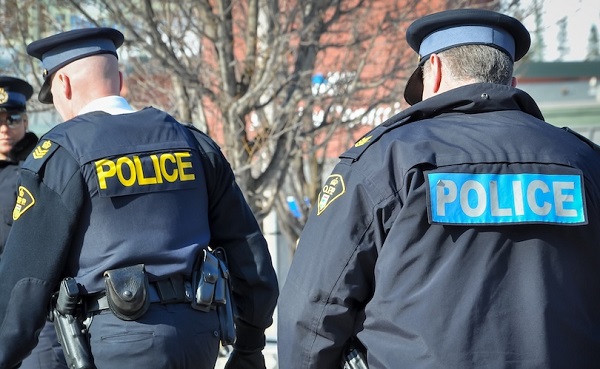
From LifeSiteNews
‘Freedom in Canada is dying slowly and gradually, not by a single fell swoop, but by a thousand cuts,’ wrote John Carpay of the JCCF.
One of Canada’s top constitutional legal experts has warned that freedom in the nation is “dying slowly” because of a host of laws both passed and now proposed by the Liberal federal government of Prime Minister Mark Carney, saying it is “up to citizens” to urge lawmakers to reverse course.
In an opinion piece that was published in the Epoch Times on December 15, John Carpay, who heads the Justice Centre for Constitutional Freedoms (JCCF), gave a bleak outlook on no less than six Liberal laws, which he warned will turn Canada into a “police state.”
“Freedom in Canada is dying slowly and gradually, not by a single fell swoop, but by a thousand cuts,” he wrote.
Carpay gave the example of laws passed in the United Kingdom dealing with freedom of online speech, noting how in Canada “too few Canadians have spoken out against the federal government gradually taking over the internet through a series of bills with innocuous and even laudable titles.”
“How did the United Kingdom end up arresting thousands of its citizens (more than 30 per day) over their Facebook, X, and other social media posts? This Orwellian nightmare was achieved one small step at a time. No single step was deemed worthy of fierce and effective opposition by British citizens,” he warned.
Carpay noted how UK citizens essentially let it happen that their rights were taken away from them via mass “state surveillance.”
He said that in Canada Bill C-11, also known as the Online Streaming Act, passed in 2023, “undermines net neutrality.” Bill C-11 mandates that Big Tech companies pay to publish Canadian content on their platforms. As a result, Meta, the parent company of Facebook and Instagram, blocked all access to news content in Canada.
“The Online Streaming Act undermines net neutrality (all online content being treated equally) and amounts to an aggressive expansion of government control over the internet and media companies. The CRTC now has broad power over what Canadians watch, hear, and access online, deciding what is discoverable, permissible, or even visible,” noted Carpay.
Carpay also warned about two recent bills before the House of Commons: Bill C-2, the Strong Borders Act, Bill C-8, and Bill C-9, as well as the Combating Hate Act.
He cautioned that Bill C-2, as it reads, “authorizes warrantless demands for subscriber data and metadata from online providers.”
“Bill C-2 should be called the Strong Surveillance Act, as it gives sweeping powers to a host of non-police government officials to conduct warrantless searches,” warned Carpay.
He observed how Bill C-2 would grant law enforcement “unprecedented powers to monitor Canadians’ digital activity,” without any “judicial oversight.”
“Any online service provider—including social media and cloud platforms, email domain hosts and even smaller service providers—would be compelled to disclose subscriber information and metadata,” he warned.
When it comes to Bill C-8, or The Critical Cyber Systems Protection Act, Carpay warned that if passed it would “allow government to kick Canadians off the internet.”
“The government’s pretext for the Critical Cyber Systems Protection Act is to ‘modernize’ Canada’s cybersecurity framework and protect it against any threats of ‘interference, manipulation, disruption or degradation,’” wrote Carpay.
“Sadly, it remains entirely unclear whether ‘disinformation’ (as defined by government) would constitute ‘interference, manipulation, disruption or degradation’.”
Lawyer warns new laws ‘grant government unprecedented control’
Bill C-9, the Combating Hate Act, has been blasted by constitutional experts as allowing empowered police and the government to go after those it deems have violated a person’s “feelings” in a “hateful” way.
Carpay, who has warned about this bill and others, noted that when it comes to Bill C-9, it affects Canadians’ right to religious freedom, as it “removes needed protection from religious leaders (and others) who wish to proclaim what their sacred scriptures teach about human sexuality.”
“Marc Miller, Minister of Canadian Identity and Culture, has stated publicly that he views certain Bible and Koran passages as hateful. Bill C-9 would chill free speech, especially on the internet where expression is recorded indefinitely, and particularly for activists, journalists, and other people expressing opinions contrary to government-approved narratives,” he wrote.
“This law also vastly increases the maximum sentences that could be imposed if a judge feels that the offence was ‘motivated by hatred,’ and creates new offences. It prohibits merely displaying certain symbols linked to hate or terrorism in public, and extends criminal liability to peaceful protest activity.”
Carpay said that both C-8 and C-9 together “collectively grant government unprecedented control over online speech, news, streaming services, and digital infrastructure.”
He said that the Liberal federal government is “transforming Canada’s centuries-old traditions of free speech and privacy rights into something revocable at the pleasure of the CRTC, politicians, and bureaucrats,” adding that Canadians need to wake up.
“Laziness and naivete are not valid reasons for failing to rise up (peacefully!) and revolt against all of these bills, which are slowly but surely turning Canada into a police state,” he wrote.
Carpay said that Canadians need to contact their MPs and “demand the immediate repeal of the Online Streaming Act and the Online News Act,” and “reject” the other bills before the House.
When it comes to Bill C-9, as reported by LifeSiteNews, the Canadian Constitution Foundation (CCF) launched a petition demanding that a Liberal government bill that would criminalize parts of the Bible dealing with homosexuality under Canada’s new “hate speech” laws be fully rescinded.
The amendments to Bill C-9 have been condemned by the Canadian Conference of Catholic Bishops, who penned an open letter to the Carney Liberals, blasting the proposed amendment and calling for its removal.
-

 Crime2 days ago
Crime2 days agoBondi Beach Survivor Says Cops Prevented Her From Fighting Back Against Terrorists
-

 Automotive2 days ago
Automotive2 days agoFord’s EV Fiasco Fallout Hits Hard
-

 Agriculture1 day ago
Agriculture1 day agoWhy is Canada paying for dairy ‘losses’ during a boom?
-

 Frontier Centre for Public Policy1 day ago
Frontier Centre for Public Policy1 day agoCanada Lets Child-Porn Offenders Off Easy While Targeting Bible Believers
-
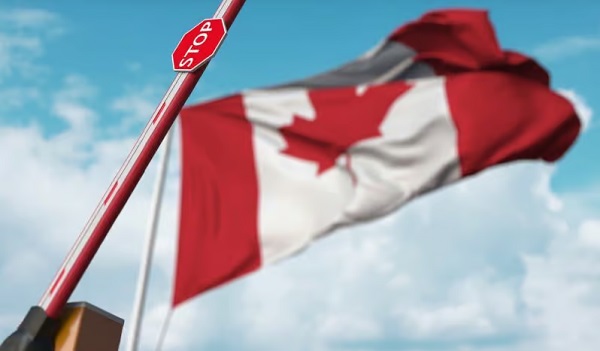
 Business1 day ago
Business1 day agoCanada Hits the Brakes on Population
-

 International2 days ago
International2 days agoTOTAL AND COMPLETE BLOCKADE: Trump cuts off Venezuela’s oil lifeline
-

 Agriculture1 day ago
Agriculture1 day agoCanadians should thank Trump for targeting supply management
-
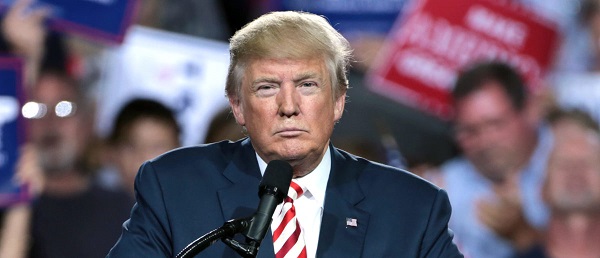
 International2 days ago
International2 days agoHouse Rejects Bipartisan Attempt To Block Trump From Using Military Force Against Venezuela




